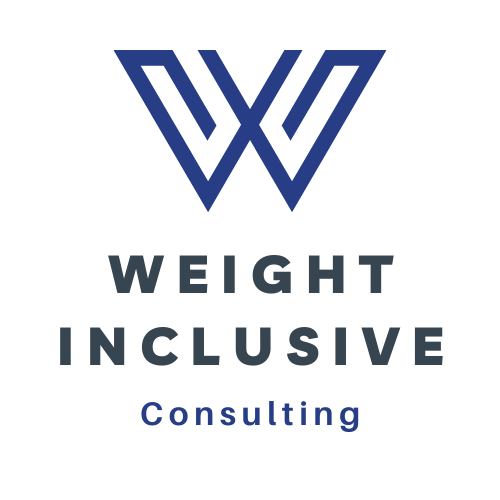What Does Size-Inclusive (Really) Mean?
Size inclusiveness is perceived as a relatively new trend because of body positivity and D&I ideologies, however, the fat liberation movement has been around since the 1960s. However, there is still many misconceptions and uncertainties about what it means to be an equal opportunity employer in terms of body size. By the end of this article, readers will gain clarity on several questions regarding size-inclusiveness in the current world of work.
Defining Size-Inclusivity
In its essence, a size-inclusive company refers to a company that recognizes, appreciates, and caters to employees of different sizes. Sometimes, it is driven by policy, practice, or cultural change to promote the belief that people with a variety of body sizes are welcome and can thrive.
Some key elements include:
Ensuring that employment policies include body size as a protected class in the workforce at all organization levels.
Offering the equipment necessary for comfortable ergonomic office work for different bodily structures
Shift in corporate culture so that anti-fat bias is not accepted or tolerated (no diet talk or disparaging larger bodies)
Survey employees to understand their experiences of anti-fat bias in the workplace
Advantages Of Size Diversity at The Workplace
Promoting diversity in the workplace has been proven to have a bundle of positives regarding individual workers and the company.
These include:
Better Output and Efficiency
Supporting diversity makes sense to organizations because workers who feel valued based on their identity, experience, and characteristics display positive attitudes and increased performance levels.
Attracting Top Talent
With increased regard towards diversity and inclusion in society, candidates (particularly millennials) are pursuing size-inclusive employers. This equally puts inclusive employers in a favorable position to attract diverse talent.
Size-inclusivity fosters wider and stronger DEI in organizational culture. This leads to more creativity, innovation and problem solving hence increased unity of employees and less turnover.
Reputational Gains
Organizations that have been proven to have a diverse workforce and are supportive of DEI efforts, are more likely to produce positive perceptions and can redefine the image of the organization to the public and show themselves as a progressive organization with ethical practices. This also enhances its brand and outside market posture.
Barriers to the Development of Size Inclusion
While critical for contemporary workplaces, putting size-inclusivity into meaningful practice can involve substantial behavior change and some upfront investment, including:
Policy & Process Reform
Update HR/Company policies. Protect fat people by making size a protected class.
In all relevant HR/Company policies mention body size as a protected class alongside other identity factors. This could include the HR Manual, the company diversity statement and on job descriptions accessibility statement. You may need to provide additional information on what type of talk is prohibited e.g. diet talk and anti-fatness.
Empower managers to protect larger employees when a client or customer displays anti-fatness in the same way they would any other bias they encounter.
Communicate the new policies to employees and clients where relevant. This could be tied in with rolling out training company-wide.
Training to Address Biases
We cannot expect employees to eliminate diet talk and anti-fatness unless they understand what it is and its impact.
Depending on the size of the organization then training beginning with the DEI team and HR team is a good place to start
Company-wide training would be a good starting point if there is no internal DEI team or only a few in that role. Again depending on the size of the organization starting with training leaders to ensure company-wide buy-in and then moving to all employees may be a strategy for success.
Remember to centre the largest bodies as well as old, racialized, poor and disabled folks.
Basic Access and Accommodations
A place to sit, clothes to wear, an office they can navigate and a washroom. This is the #1 priority that would help with making the workplace size-inclusive.
Ongoing Dialogue
Re-evaluate and Shift the Culture
Continue to ask body size demographic data about employees and get feedback on their experiences.
Reinforce that the culture of your organization celebrates size diversity and does not tolerate anti-fat or diet talk in the office
Enforce the new policies until it becomes the genuine culture of your organization to respect all bodies (or at least keep biased views outside the workplace).
Conclusion
Promoting appreciation and acceptance of people of different sizes is the right thing to do for society and a business strategy that every modern company should adopt. Although the journey to genuine integration calls for a lot of effort as well as dollars, the rewards are numerous and significant in the areas of the employees and the corporate culture as well as organizational performance. Accepting all body types is a form of accepting all humans and that will take any workplace to a higher level.


